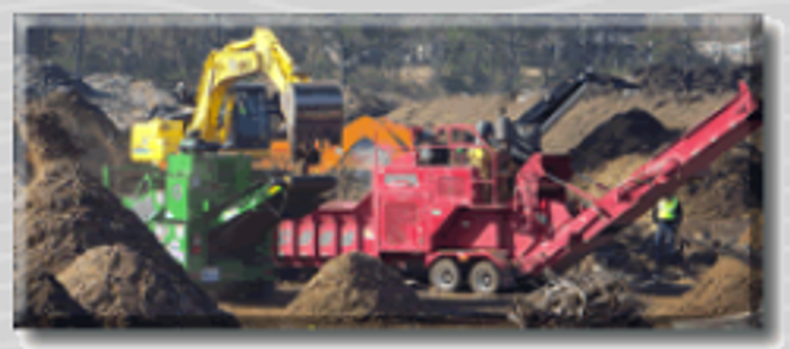Introduction to Colored Mulch
Producing colored mulch can be a great way to add new products to your existing operation, grow your customer base and maximize profits. If you already own a grinder and/or screening equipment, then the upfront investment to produce colored mulch is minimal, and the opportunity to improve your bottom line can be significant.
Test the Market
The first step in deciding whether to bring producing colored mulch is to research your local market and determine if sufficient demand is present. This will generally involve speaking with local nurseries regarding their demand and requirements for colored mulch, or gauging interest from your existing natural mulch customers. Alternatively, you may consider producing colored mulch on a trial run to test the market.
There are two mulch markets to consider: retail and wholesale. Generally, retailers sell much less volume, but at a higher mark-up; wholesalers work at a higher volume, but with less profit per unit. Deciding which market is right for you will depend on your local market size and production capabilities.
Though prices will vary by region, the average consumer cost for a cubic yard of color-enhanced mulch is approximately $15 wholesale, and can reach as high as $45-$50 for retail. Some of the variables that dictate pricing include: market competition, conventional bark mulch prices, coloring quality and the availability of consistent wood fiber.
Getting Started
Ready to being producing colored mulch? There are two methods for applying the color: dry powder or liquid colorant.
Liquid colorant is by far the most common and economical method of coloring large quantities of mulch, and will be the focus in this article. Using liquid colorant requires a color pump and spray bars mounted to your grinder or screener. The total startup investment (including pump, spray bars and a small amount of colorant) can be as low as $10,000, but typically, will fall within the range of $10,000-$20,000, depending on the size of operation you want to develop.
While there are a variety of specialized stand-alone coloring machines available on the market, most companies begin by coloring in their tub grinder, horizontal grinder, or trommel screen. Trommel screens can be more effective and efficient than grinders, but most operators start by coloring with their grinder until product demand increases and requires otherwise. Because a variety of pumps are available to accommodate even the largest of machines, production rates will be determined more by the production capabilities of your equipment or the availability of water, rather than by the piece of coloring equipment.
Alternatively, dry powder colorant can be a great way to produce a small amount of colored mulch to first test the market without having to add any additional equipment to your operation. Production and quality is generally lower with dry powder colorant than when using liquid colorant, and, since water develops the color, both methods will require water to produce a finished product.
Which Color is Right for You?
There is a variety of colors available on the market for mulch; the most common colors are Black, Red, and Brown. Because the demand for both color shade and quantity will vary by location, market research and product testing will help you determine the best product assortment for your operation.
It is important to note that the amount of colorant required to produce the different colors will likely fluctuate depending on the type of wood fiber, size of mulch, as well as the moisture content. Generally, three pounds of colorant per yard of mulch are recommended as a starting point. However, in order to maintain a consistency in the colored product, the mixture of water and colorant will need to be adjusted a little each time before you begin production.

